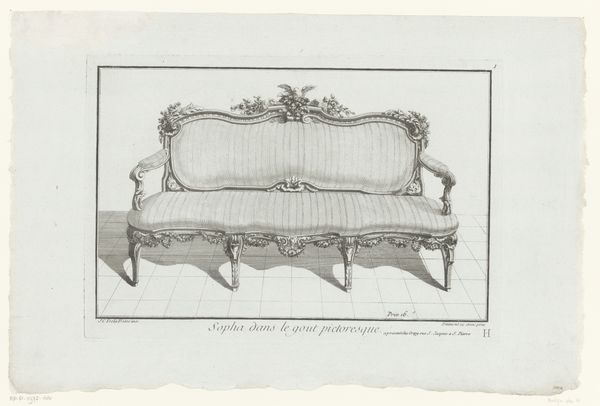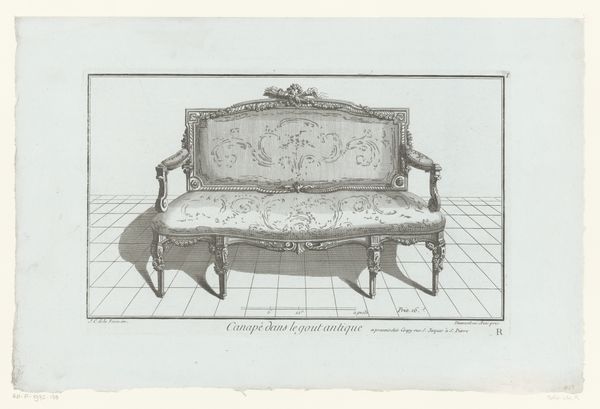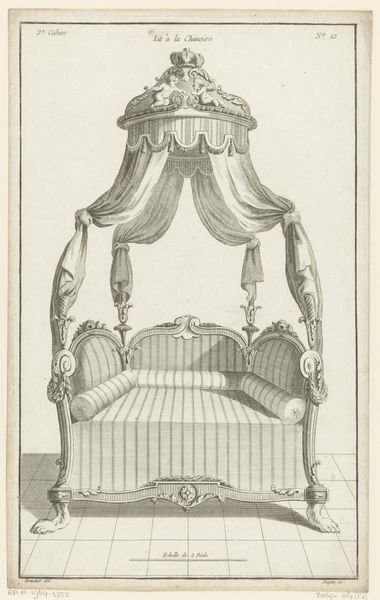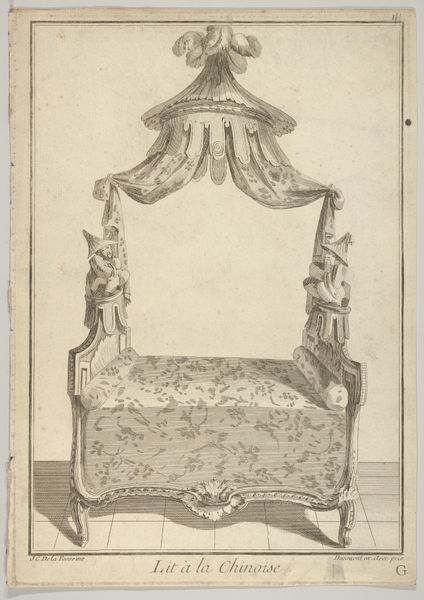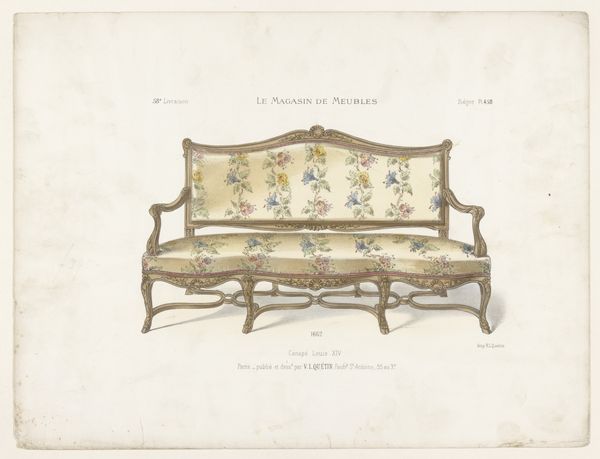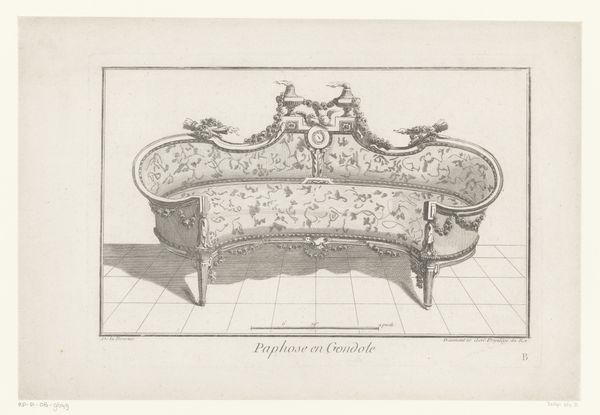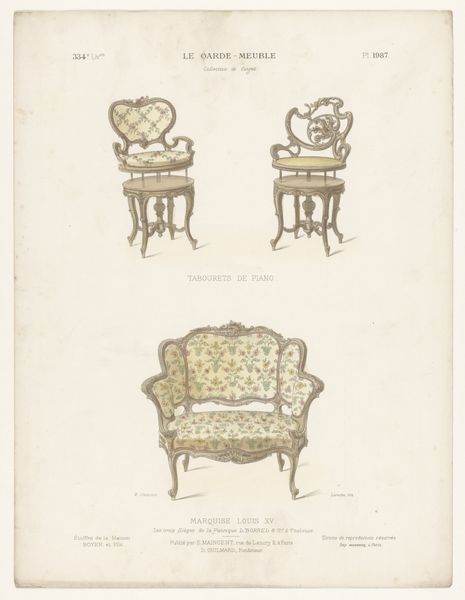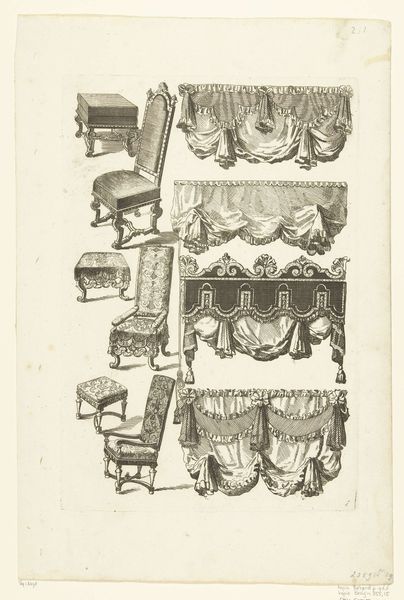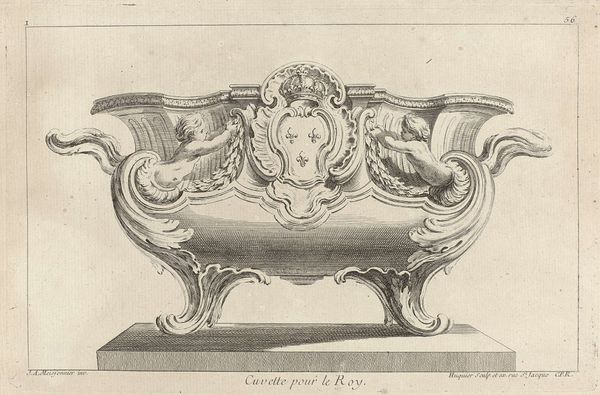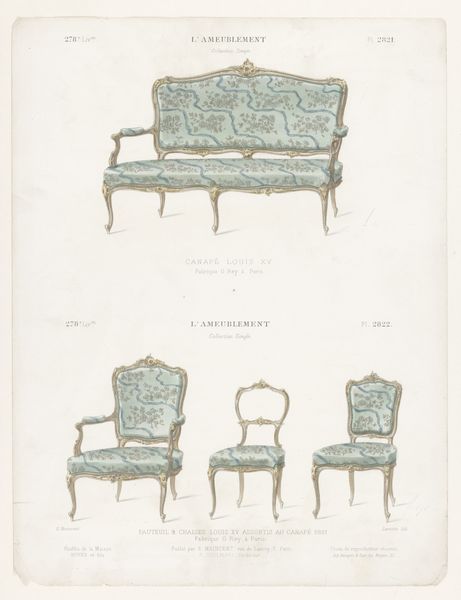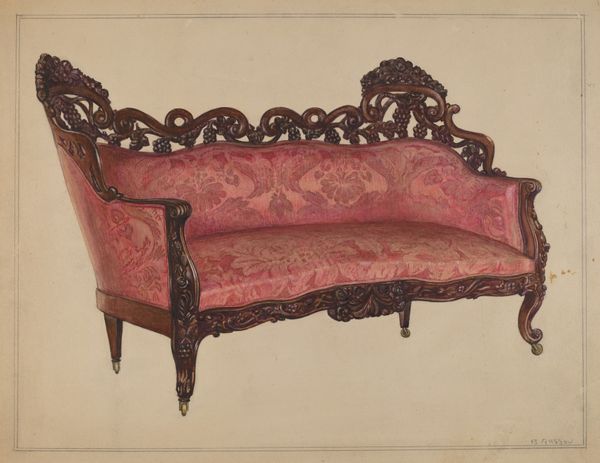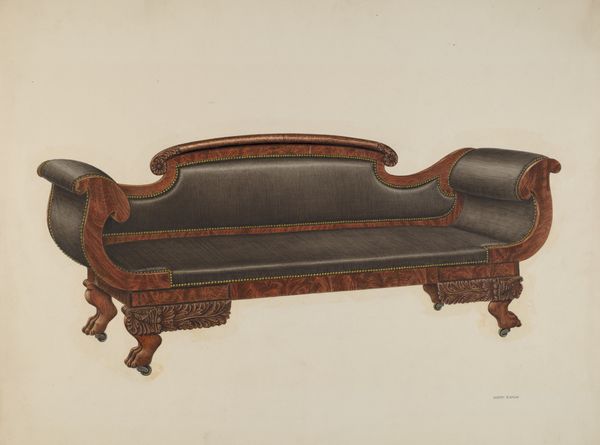
print, engraving
# print
#
old engraving style
#
furniture
#
form
#
line
#
decorative-art
#
engraving
#
rococo
Dimensions: height 316 mm, width 362 mm
Copyright: Rijks Museum: Open Domain
Gabriel Huquier created this design for a canapé, or settee, using etching in Paris around 1735. This elaborate piece wasn't just furniture; it was a statement of power and status in the 18th century. Looking at the image, you can see the extravagant ornamentation, the flowing lines, and the luxurious fabric pattern. It all speaks to the Rococo style, which was favored by the European elite, including the Polish count for whom this was designed. This style reflected a society where aristocratic taste and patronage shaped artistic production. Pieces like this were status symbols, meant to impress visitors and reinforce social hierarchies. To truly understand this canapé design, we need to consider the economic and political landscape of the time. Access to resources, trade routes, and the labor of skilled artisans played a crucial role in bringing such designs to life. Research into period inventories, design books, and social histories can reveal the rich layers of meaning embedded in this seemingly simple piece of furniture. Art history helps us appreciate how material culture reflects broader social dynamics.
Comments
No comments
Be the first to comment and join the conversation on the ultimate creative platform.
